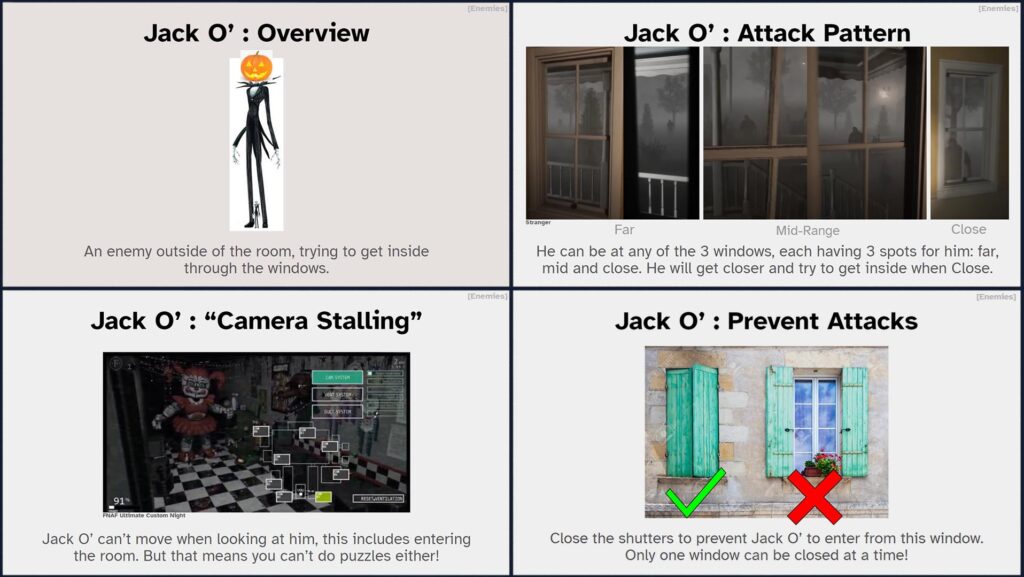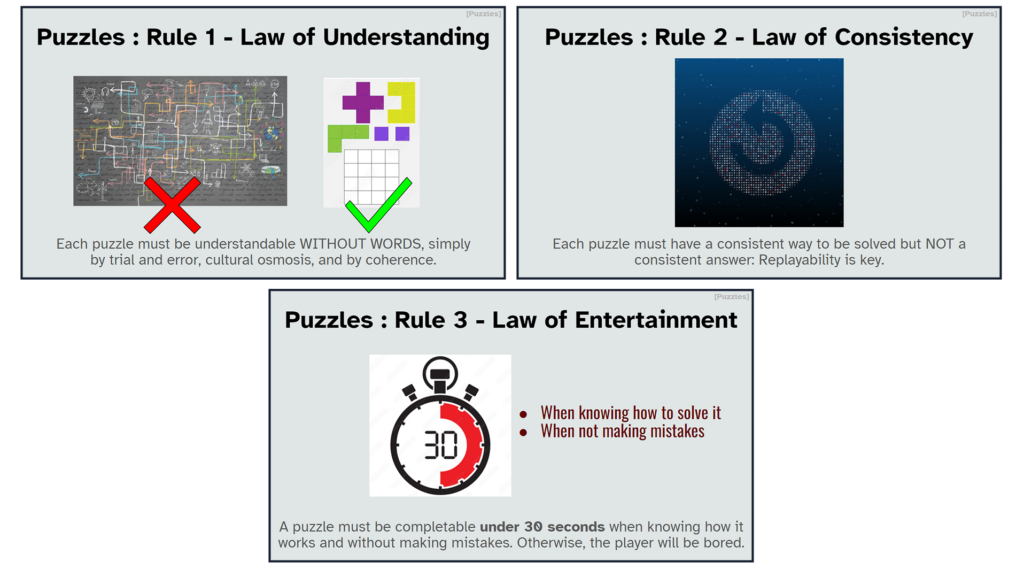
Deep Dive
Evil Feeds is a Puzzle Horror Game based on Escape Rooms. You have 15 minutes to exit the room you are by solving a four-step enigma; all while fighting off monsters that want you dead.
The four puzzles in order are: Finding and putting back in order a code made out of pictures, finding the button order to open the door, figuring out how the flashing buttons work, and solving the right combination at Mastermind.
By contrast, the two enemies ask you to keep an eye on the creeping progress and close the correct window in time; and to frantically search for purple objects in the room.
Evil Feeds was produced as a solo project to get a hang of Unreal Engine, to test a new design workflow, and as a tryout at the “Escape Room” concept in videogame format.
New Design Preproduction
Inspired by this video by Masahiro Sakurai where he shows his methodology for writing Game Concept Proposals, I decided to try this new approach out. Instead of a Miro, or a text document; I would do a Slide-type document.
Every slide would be a one-pager: one or two phrases per slide, with a title and an image. That’s it.
Every mechanic and game element would need more than a single slide, but that would just force me to multiply the number of slides and, in turn, broaden the scope of tackled topics.

Here is what the document looked like. Those are the proposal pages for the Jack O’ enemy.
Puzzle Design Crashcourse
For this project, I prepared a set of 3 Laws or Rules of puzzle design
to follow in order to have a clear vision and consistent design, both for the puzzles and enemies. They, of course, only apply for this project and aren’t general rules, but still.
They were:
> Law of Understanding:
“Each puzzle must be understandable without words, simply by trial and error, visual clarity and cultural osmosis”
> Law of Consistency:
“Each puzzle must have a different solution each time you play, but always the same methodology to solve it”
> Law of Entertainment:
“Once you know how to solve a puzzle, you must be able to finish it in under 30 seconds“

Original slides for the 3 Laws, dating back to December 2022
While the Laws of Consistency and Entertainment have been entirely respected in my opinion, the Law of Understanding has proven… difficult.
Between players having wildly different ways of thinking about the same problem (which is to be expected, but I didn’t expect that much of a difference), references like the game Mastermind not being as universal as I thought, and unclear affordances not helping anything; the final result could have used more iterations.
Unlike some other games, the puzzles here are randomized. The same logic is used to solve it, but the actual end solution is random each time you restart. This is why the Law of Consistency and Entertainment are especially important.
Fun Fact!
In our game THE DIIG, the main mechanic is to redirect lasers into receptors using gems. This idea is originally one old puzzle concept for this very game!
Horror Escape Room Theming
The game was focused on two cores: Tension and Puzzle-Solving, and needed to emulate aspects of a real Escape Room.
In an Escape Room, you always have a game master watching over you, and giving you hints if you’re stuck. To transform this in an organic way, I added a screen with the timer on it, and a button next to it that
gives hints on the current puzzle at the cost of some time.
The exchange is equivalent to real Escape Rooms: Instead of spending time blocked on a step before getting a hint, you make the proactive choice of sacrificing time for help.
With the narrative of being trapped in a hell of some sorts, the idea of something bigger observing your progress feels appropriate.
